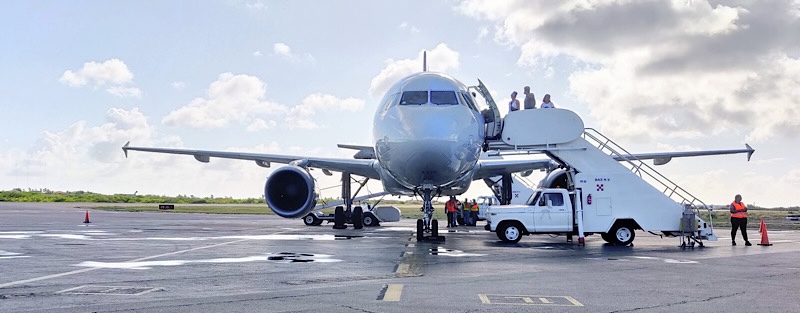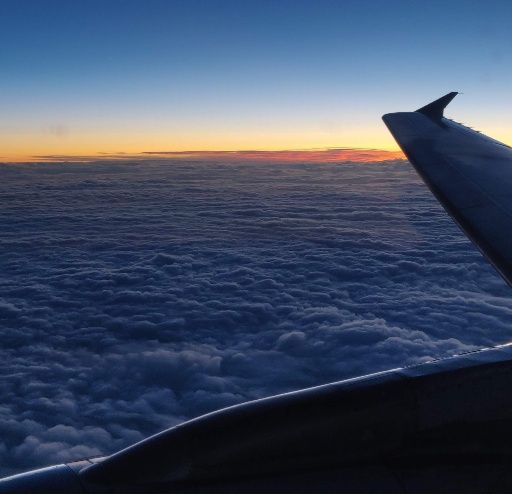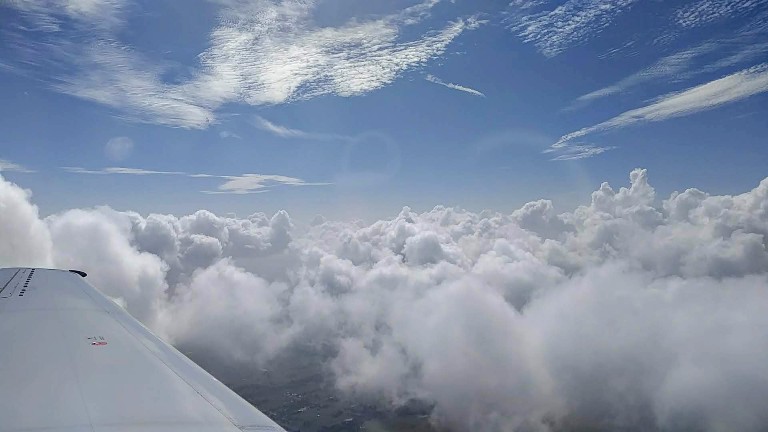What if I told you that you could start building your life around a career that allowed you the benefit of free flights? Jetting to London for a quick weekend trip. Flying to San Francisco to see the tourist sights. Booking a flight to New York to try a new brunch spot without staying long enough to worry about a hotel. Have you ever wondered how in the world some people seem to pop up in a new destination every weekend? I’m here to reveal one of the worst-kept secrets in the travel industry: most airline employees can fly standby on their company’s flights for free. Welcome to the world of non-rev travel.
It sounds like the best job perk ever, right? In my opinion, it absolutely is.
Before you quit your day job & shotgun your resume out to every airlines’ job portals, let’s explore the topic of non-revenue standby flight benefits (commonly known as non-revving) a bit further.
What does “non-rev” mean?
While airlines do their best to fill up every single seat on their flights to maximize profits, any seats that remain empty at the end of the boarding process are then assigned to passengers who are on the standby list; this list is populated by passengers who either missed their previous flights/connections or are trying to change their original flight.
Non-Revenue Space Available (NRSA) travel benefits allow airline personnel to be added to the standby list of eligible flights without having to purchase a ticket. Non-revenue standby passengers, known as non-revs, are added to the very bottom of the standby list and will only be allowed to board the plane if there are still seats available once all paying passengers have been accommodated.

Who is eligible for non-rev travel?
Most airlines offer non-rev travel benefits to all of their employees, though contractors who do not receive benefits directly from the airline will not be eligible. Non-rev standby privileges are often extended to the certain relatives of each airline employee as well. Many airlines also grant non-rev benefits to eligible retirees who have achieved company-specific retiree status through their years of service.
Some airlines allot buddy passes that can be distributed by employees to friends & family, though these types of passes generally cost money. Be warned: buddy passes receive the lowest priority during the boarding process; anyone in the industry can rattle off countless horror stories about buddy pass riders getting stranded around the world.
Is non-rev travel really free?
Yes and no, depending on who is traveling & where they are going.
For many U.S.-based airlines, non-revs can fly standby for free between any domestic airports. It doesn’t matter if you are flying to Chicago or to Hawaii; domestic non-rev travel doesn’t cost a penny. Basically, free flights are part of an airline employee’s compensation package. This benefit is often extended to spouses and children, but employees will generally have to pay a fee to allow parents and buddy pass riders to fly standby.
International non-rev travel is a bit more nuanced. Your airline will not charge non-rev flyers to list for a flight, but they will pass on any international departure/arrival taxes that are charged by the destination’s governing body (if any). For example, flights from the US to Madrid are free because there are no arrival taxes tacked onto your ticket. However, you will be responsible for paying the ~$50 MAD departure tax. So while this trip may not be free, a ~$50 roundtrip ticket to Spain costs just about as much as an Uber ride to downtown & back.

How often can you use your non-rev travel benefits?
I often get asked if I only have an allotted amount of flights per year. My airline allows me to utilize this perk as many times as I want throughout the year, and colleagues from other airlines report the same free reign with their perks.
This unlimited benefit is truly remarkable. To date, I have flown over 400 non-rev flights. From overnight weekday flights between shifts to week-long adventures across the world, the ability to fly standby on a whim is a great perk.
Is it hard to fly standby as a non-rev traveler?
Put simply: yes.
In theory, the process of flying standby is very simple. Show up to the airport, wait at the gate until the number of available seats has been confirmed, and either get assigned one of the open seats or get rolled over to the standby list for the next scheduled departure. Then, just rinse & repeat until desired results are achieved.
In practice, identifying available destinations and departure teams with an adequate number of seats can be frustrating. Non-revs have access to flight load information, but daily operations can throw a wrench in the best laid plans. Maintenance issues, weather delays, and even other airlines’ canceled flights can cause passenger loads to fluctuate all the way up until departure time.
That’s not to say it’s impossible. Countless non-revs travel around the world every day, and the most ambitious non-rev passengers can fly over 100 flights per year. Doing a little research on your destinations & route options goes a long way towards completing a successful trip. If you want non-rev tips, check out my list of 12 things I wish I knew before I took my first non-rev trip.
Can you fly standby on other airlines?
Many airlines have established interline agreements with other domestic & international airlines. These agreements established Zonal Employee Discounts, known as ZED fares, to allow employees of one airline to fly standby on another.
ZED travel opens up a global network for non-rev travelers. Maybe you can’t get to specific city (or country) on your own company’s flights, but ZED agreements give you access to other airlines’ networks. When flying on other airlines, it is important to research their staff travel policies. FlyZED is the best resource for non-rev travelers who are planning on a ZED ticket with a partner airline.
I don’t work for an airline. How else can I get free flights?
Non-rev travel benefits are simply amazing, and I specifically chose my career in the aviation industry to position myself to take advantage of this incredible privilege. However, I realize pivoting your career to join an airline is not realistic for everyone reading this
If you don’t plan on working for an airline or marrying a pilot any time soon, the world of travel hacking & pursuing credit card point bonuses is your next best option. Through careful budgeting and strategic financial planning, I have collected & redeemed thousands of dollars worth of travel spend with the help of travel credit cards.
The major credit card issuers each have their co-branded partnerships with various airlines & hotels to help you collect points that can be redeemed for flights & hotel stays. I always recommend that people start out with flexible cards, like the Chase Sapphire Preferred or Sapphire Reserve, whose points can be redeemed for a variety of different airlines & hotels.
If you want to learn more about what travel-oriented credit cards I keep in my wallet, check out my recommendations here.





Pingback: 7 Best Credit Cards for Non-Rev Travelers
Some questions regarding zed travel. I have jumped from my airline ticket counter to the zed airline ticket counter per request of the agent. Do I always go to the ticket counter that the zed is for? I assume when I select a zed flight, I will pay for it at that time. Here is an example that needs clarification. I have a flight on my airline which leaves at 5 am. If the flight is full, then I will need to use a zed fare. The connection time would not work if need to go back to the ticket counter. If I have the zed conformation number in hand, can I go to the gate to get my ticket? If I do not have a conformation number, then I will need to go back to the ticket counter, correct?
Pingback: Should you apply for the Capital One Venture X credit card? (2022 update)
Pingback: 14 Apps Every Non-Rev Needs On Their Phone
Pingback: Want to work for an airline? Here are 29 airline job portals